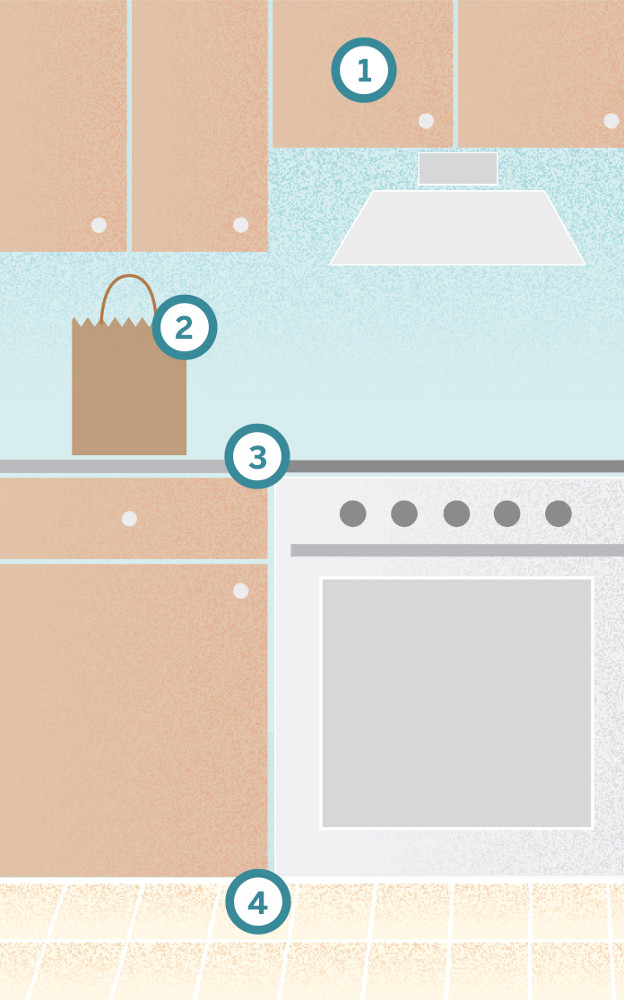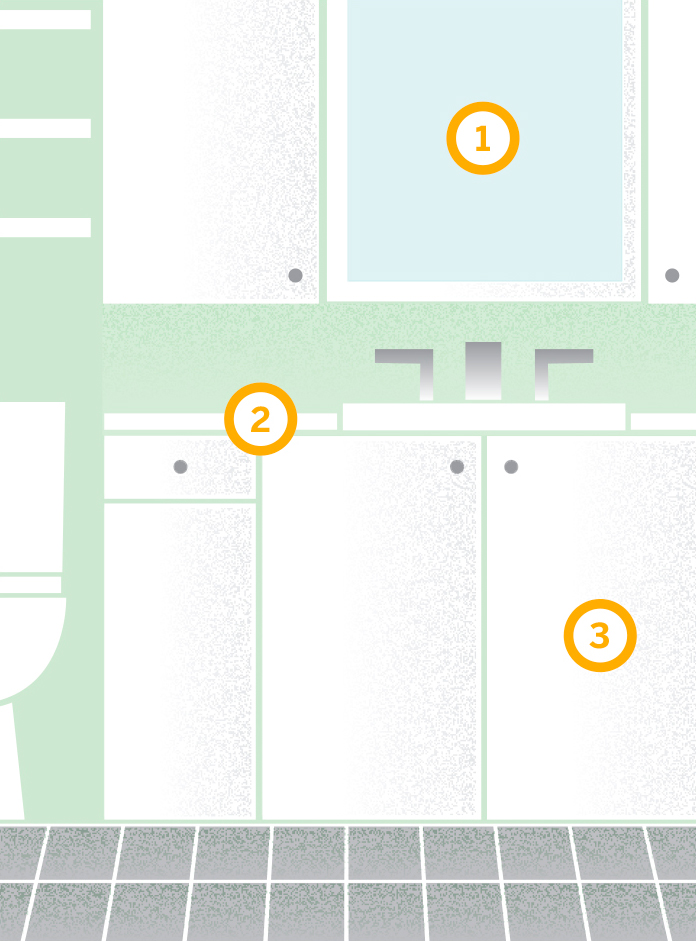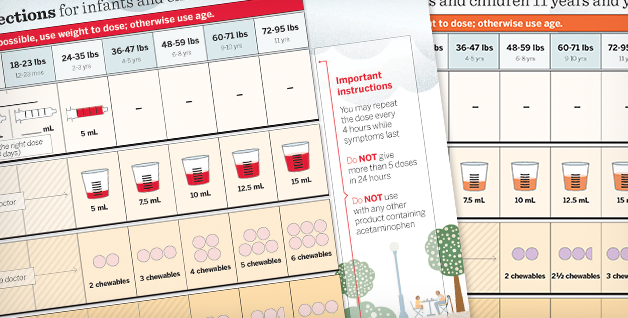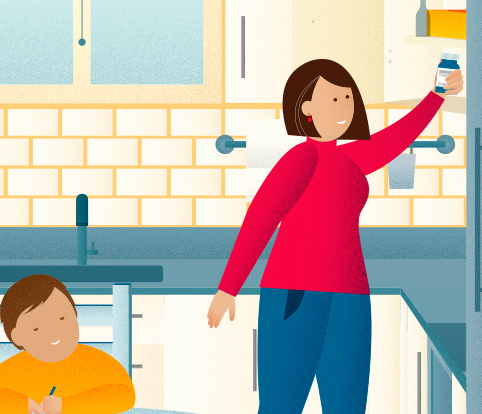Room-by-room medicine safety
Here’s a visual guide to storing medicine up and away throughout your home—in your kitchen, bathrooms, and bedrooms.
The Kitchen

If you’re like many people, you may keep medicines, vitamins, first-aid creams, and other health products in your kitchen. Here’s how to store them safely and help prevent medicine accidents:
1. Upper Cabinet
Storing medicine out of sight and on high shelves in cabinets helps to keep medicine out of sight and out of reach of children.
2. Grocery Bag
Unpack all medications, vitamins, and supplements from grocery bags first, before kids can get into them.
3. Kitchen Counter
Children like to climb and to help themselves to things lying around. Remember to avoid leaving medicines and vitamins on the counter even if you think they’re out of your child’s sight.
4. Cabinets Under Sink
Curious children can easily get into cabinets under the sink. Instead of storing your medicines here, be sure to store them up, away, and out of sight of children.
The Bathroom

The bathroom may not be the best place to store medicines because the heat and humidity may damage them. Plus, some areas can be easy for children to reach. If you do choose to store medicines in the bathroom, follow these tips:
1. Medicine Cabinet
If you use this for medicines or other healthcare items—such as vitamins, eye drops, or first-aid creams—put a childproof lock or latch on the cabinet door.
2. Sink Counter
Make sure no medications or supplements have been left out. Store them up and away from children when you’re finished using them.
3. Cabinet Under Sink
Small children may find it easy to get into cabinets under the sink. Be sure to remove medicines or other healthcare items and place them up, away, and out of children’s sight.
The Bedroom

Your bedroom may seem like a logical, private place to store medicines, but it may not be the safest. Consider these suggestions to protect young children:
1. Purses & Bags
Be sure to store purses, diaper bags, or guest bags that could contain medicine out of the reach of children.
2. Nightstands & Dressers
Although these are common places to store medicines, they’re unsafe because children can reach them. Check to see if a family member or overnight guest might have left medicines, vitamins, or supplements here.
3. Floors & Under the Bed
Check to see if any pills have accidentally fallen on the floor or under the bed. Children will be the first to find them if crawling or playing.




